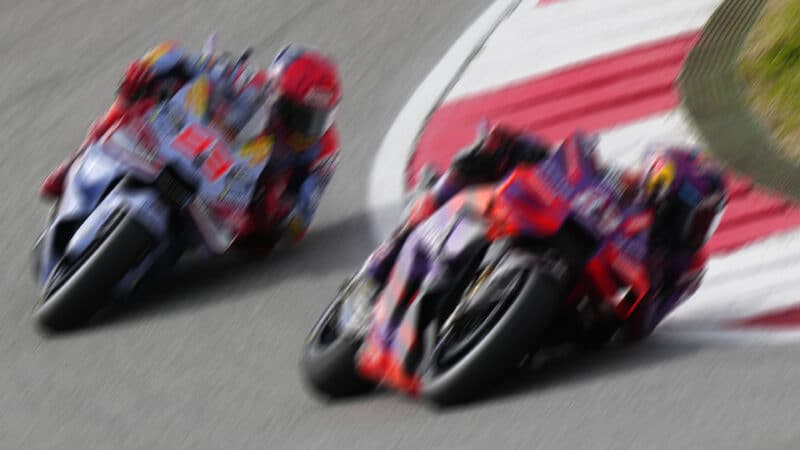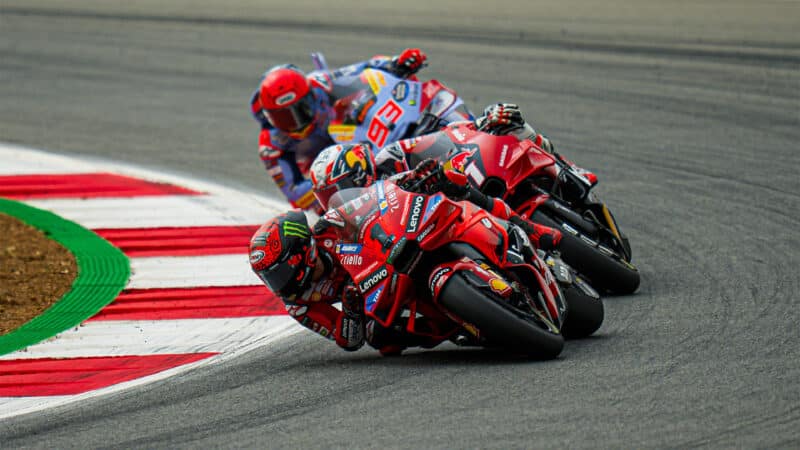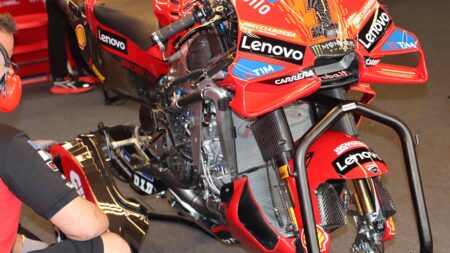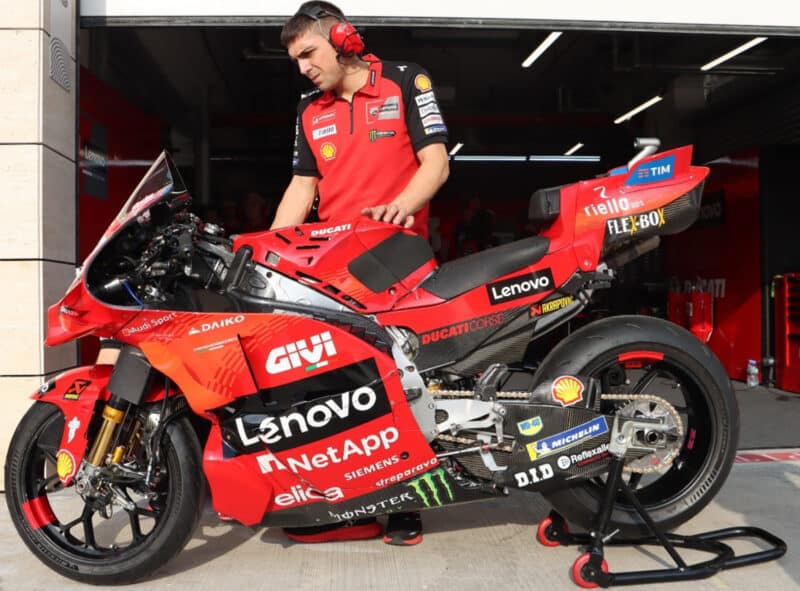So what’s going on? Michelin has all-new front and rear slick compounds this year, using a new chemical mix for harder rubber that grips as well as softer rubber, for greater durability and reduced swelling under high pressure.
During the first two MotoGP weekends of 2024 a few riders from some other manufacturers briefly mentioned chatter, but the fastest Ducati riders talked about the problem all the time, so it seems like the Desmosedici is least suited to some of these new compounds.
The irony, of course, is that Ducati has had a tuned mass damper in the Desmosedici’s seat hump since 2017, designed specifically to damp out chatter and vibration. The fact that the mass damper hasn’t fixed this particular bout suggests it’s a difficult one to cure.
Chatter has been a problem in bike racing for many decades, but there’s been little talk of it in MotoGP in recent years.
The last time it was a big deal was in 2012, when Casey Stoner and Jorge Lorenzo were fighting for the first 1000cc MotoGP title. Halfway through the season Bridgestone switched to a new front slick, which Lorenzo’s Yamaha loved, but Stoner’s Honda hated, because it caused the RC213V’s front end to chatter like hell.
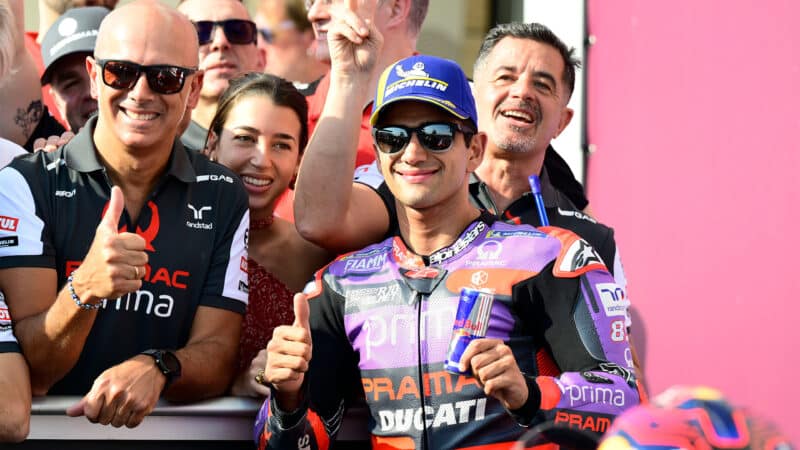
Martin with crew chief Daniele Romagnoli (thumbs up). Martin is worried that chatter could afflict Ducati throughout the season
Red Bull
“The new tyre has destroyed us!” said HRC boss Shuhei Nakamoto at the time. Indeed it may have cost Stoner the 2012 championship.
Chatter is caused by resonances within the motorcycle. Most parts of a motorcycle chassis are a spring, from the frame to the swingarm and from the triple clamps to the tyres. Even if a part only bends and springs back a millimetre or two, it’s still bending and springing.
When different parts of the motorcycle start resonating with each other they create a high-frequency vibration, which the suspension struggles to cure, especially at high lean angles, because the forks and shock don’t work properly when the bike is leant over.
Even engines can cause chatter. Aprilia’s narrow-angle RS-GP V4, replaced in 2020 by the current 90-degree V4, is a case in point. The engine vibrated badly, which caused chatter and made the bike super-nervous, especially on the brakes.

